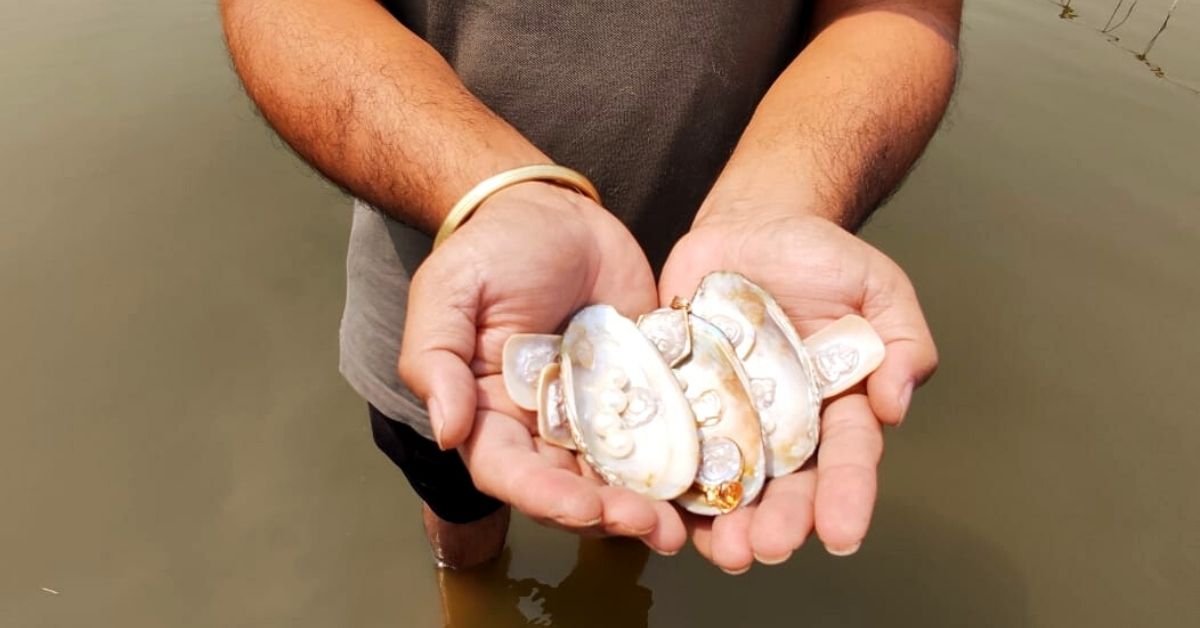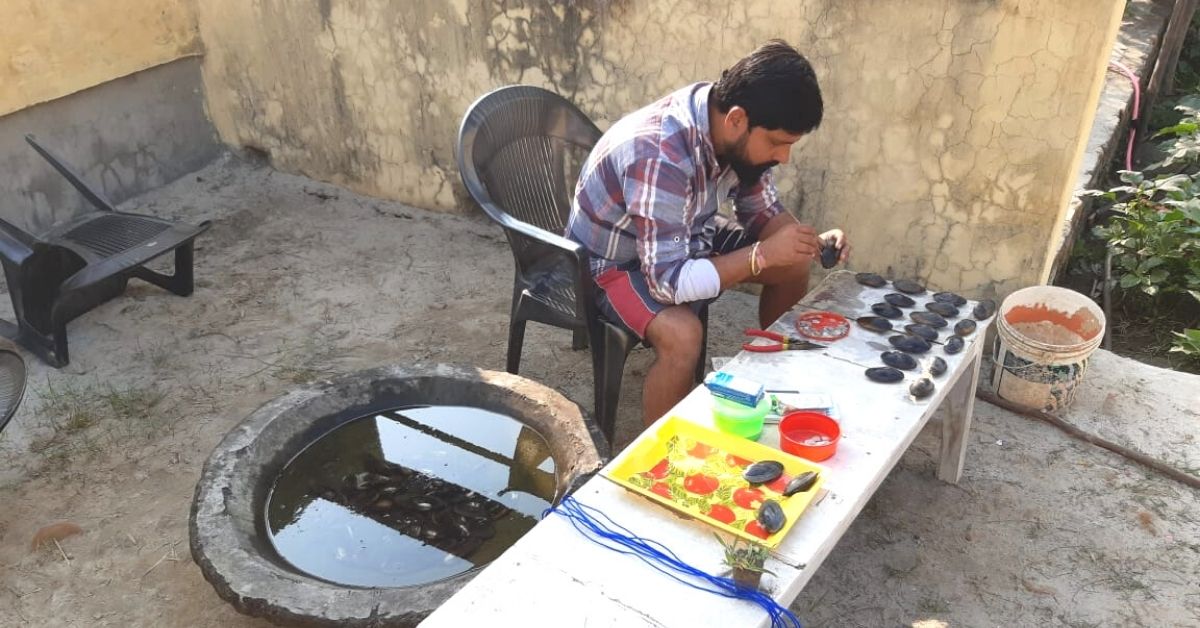While farmers in Patna and its surrounding regions of Bihar usually grow maize, pulses, lentils, cereals and rice, a 28-year-old man from the area has decided to head in a different direction. Nitil Bhardwaj from Murera village in Champaran district is earning lakhs from pearl farming.
Nitil belongs to a family of traditional farmers, but went to work in a multinational company in Delhi. He started working in early 2017 as a computer professional, and would earn around Rs 30,000 a month.
Around the same time, his father came across a news article on pearl farming, and learned how it could be a profitable business. He shared this idea with Nitil, who thought the idea was both attractive as well as unexplored in Bihar. Sometime during his leave later that year, he gave it more serious thought, and decided to pursue it.
Nitil signed up for training in Madhya Pradesh at Bomoria Pearl Farm, and worked with the management there for a few months. Once he had picked up the necessary skills, he returned to start pearl farming in his village. The risk paid off in the first attempt itself, and Nitil earned Rs 75,000. He started the ‘Bhardwaj Pearl Farm and Training Centre’ to employ six migrant workers who had lost their job during the COVID-19 lockdown.
The potential to earn lakhs

Nitil says that undergoing training at the pearl farm convinced him that full-time employment would not help him earn a decent income to support his family. “I did not want to enter mainstream farming, and hence decided to try this new alternative. In 2018, I quit my job. In my village, I decided to dig a pond on one acre of my family’s land by seeking government subsidies provided for pearl farming,” he tells The Better India.
He adds that in 2019, he planted 400 oysters in the pond. “Ideally, an acre of a pond can accommodate around 25,000 to 30,000 oysters. But I started small, as the risks involved are then less,” Nitil says, adding that he invested Rs 25,000 and grew oysters for 8-10 months, which earned him Rs 75,000.
“Each oyster demands an investment of around Rs 40. One oyster can produce two pearls, and each of them sells at an average cost of Rs 120. The oysters can remain planted for months at stretch — which helps improve their quality. A good quality pearl can fetch Rs 200 a piece. But I decided to harvest them at minimum incubation and scale-up immediately,” Nitil explains.
In 2020, he planted around 25,000 pearls, from which he expects to earn Rs 30 lakh. He has earned Rs 3.6 lakh so far, and says the income will keep pouring in until October 2021. Additionally, Nitil has been using the pond to cultivate fish through aquaculture. “I breed fish that are vegetarian and do not harm the oysters. In one season alone, I earn Rs 2.5 lakh from the fish business,” he adds.
The farmer’s success has made him famous, and inspired others in the area to pursue pearl farming as well. The fisheries department has also taken note of his efforts.
District fisheries officer Surya Prakash Ram says, “The pearl farming initiative has motivated farmers to think beyond conventional practices and demonstrate a solution to multiply income.”
Surya says that the department is collaborating with Nitil to train other farmers.
A way to stay close to home, and earn a decent livelihood

Nitil says that he is training 15 farmers in one batch. “The training is conducted for a small fee and lasts two days. If pursued with discipline, a farmer can earn lakhs from pearl farming,” he adds.
Apart from training the farmers, Nitil has also employed six migrants who lost their jobs due to the COVID-19 lockdown and were forced to return home. Prabhu Yadav is one such migrant earning Rs 7,000 a month by working at Nitil’s pearl farm. “I used to work as a painter in Srinagar and returned in October 2020. Nitil offered me a job to help me in the crisis. The work is satisfying as I don’t spend on rent and other expenses. I can live with the family and no longer have to be away from them to earn livelihood,” he adds.
Nitil says that pearl farming, while lucrative, needs attention throughout the growing process. “The health of the oysters has to be monitored every 15 days. It demands providing healthy food and nutrition. The temperature of the water should be favourable at all times. If an oyster dies, it should be removed immediately to save the others and prevent the infection from spreading,” he explains.
At present, Nitil sells the pearls to traders in Mumbai, Delhi and Kolkata. They also export the produce to China and Japan.
The farmer says he is glad to have taken the decision to switch to pearl farming. “It is a satisfying feeling to know that I can be close to my family, support them, and earn a better income than living in a city. I appeal to all youngsters to return to their roots and pursue farming or agriculture-related activity. I also feel proud to have supported migrants during the tough times,” he adds.
Edited by Divya Sethu
No comments:
Post a Comment